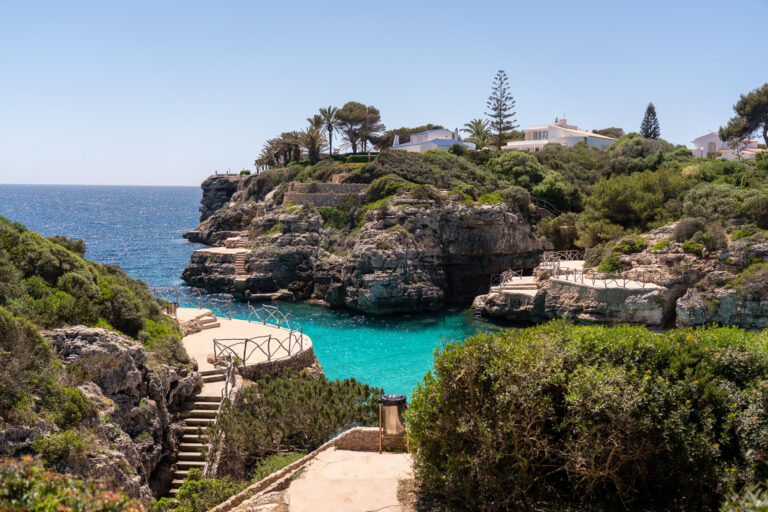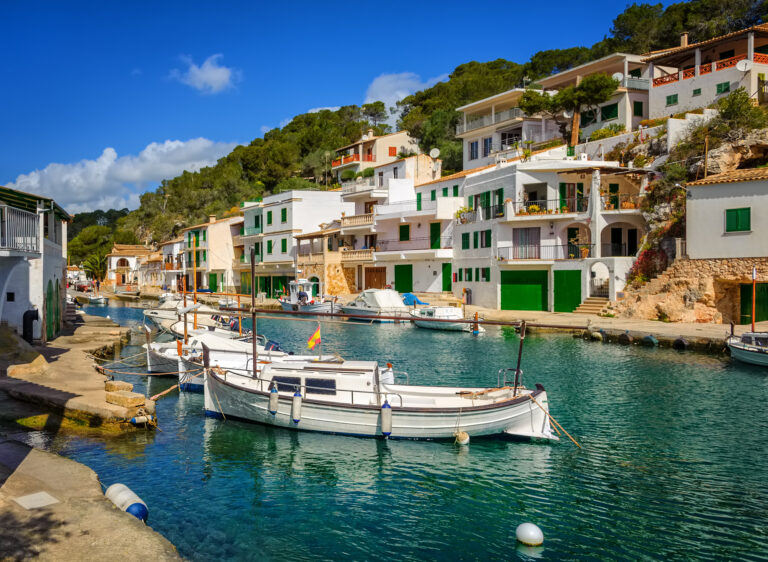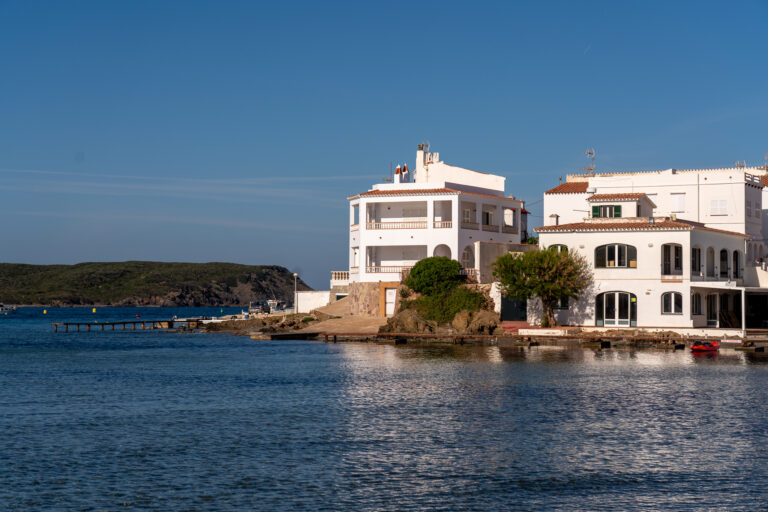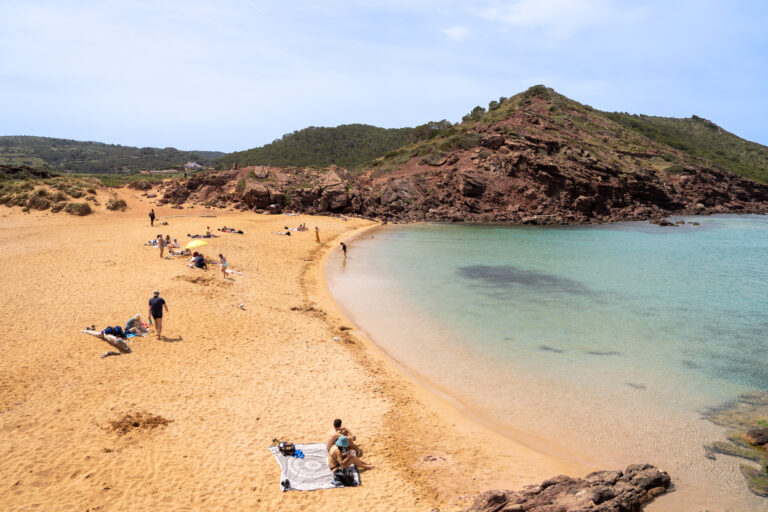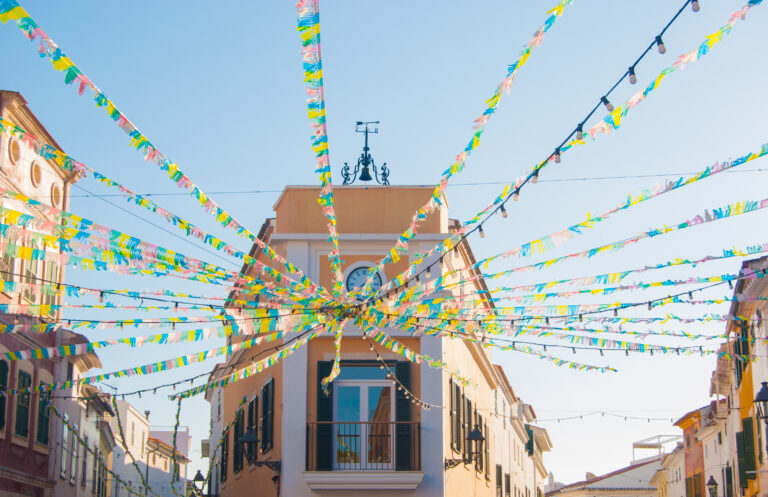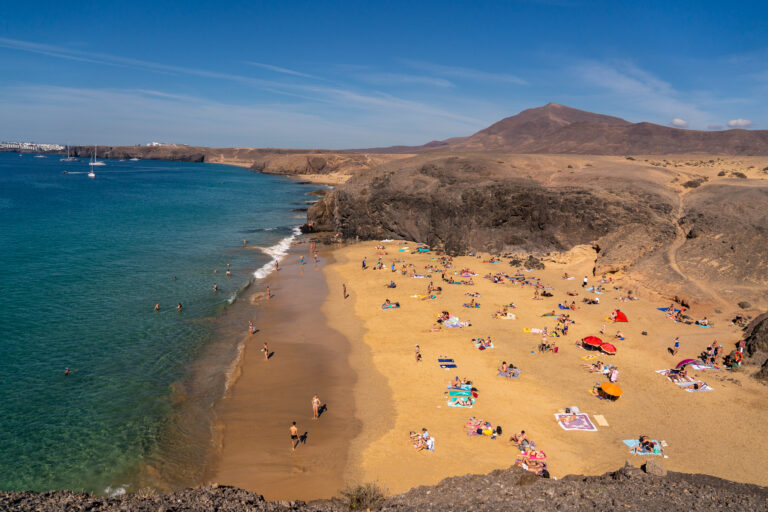Visiting Binibeca | A Complete Guide to Menorca’s Most Charming Village
Binibeca in Menorca is one of those places that gets under your skin – a place you want to return to each time you visit the Balearic Island (if you’re anything like me!). But what is so special about this tiny fishing village on the southeastern coast?
To begin with, the village is picture-postcard pretty. Fairy tale, chalk-white stucco houses with pointy chimneys line stone alleyways framed by archways and wooden pergolas. The scent of bougainvillea drifts upon a gentle sea breeze and the beaches are swathes of soft pale sand leading to Mediterranean waters so clear you can see your pedicure.
You can spend days, weeks or longer here, dining on local cuisine, learning to dive, or kayaking along the coastline. There are local wineries to visit, sections of the famous Camí de Cavalls trail to hike, or you can simply watch the sunrise with a café amb llet from your balcony.
To say this village is idyllic would be an understatement, so if you’re tempted to book a holiday in Binibeca, let’s take a look at some of the best things to do during your stay.
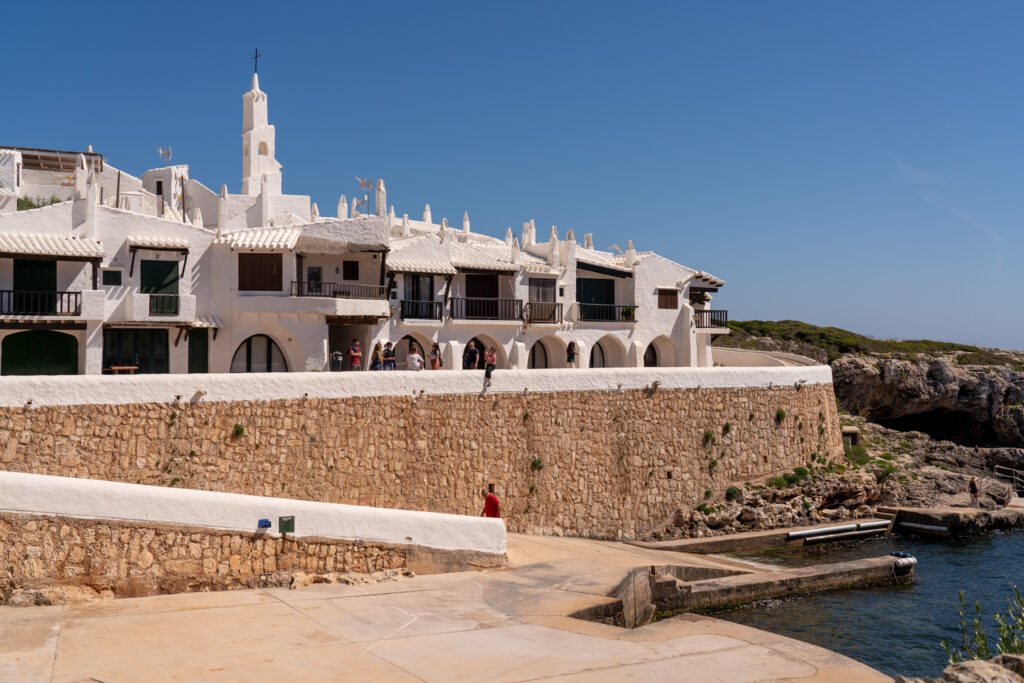
A Brief History of Binibeca
The name Binibeca is said to come from the Arabic word ‘bini’ which means ‘Son of’, possibly harking back to the times when Menorca was annexed under the Caliphate of Cordoba in the 10th century. The word ‘beca’ is the Spanish word for studentship or scholar.
With this in mind, upon first glance, you could be forgiven for thinking that Binibeca has been here for centuries, but as you’ll discover below, nothing could be further from the truth.
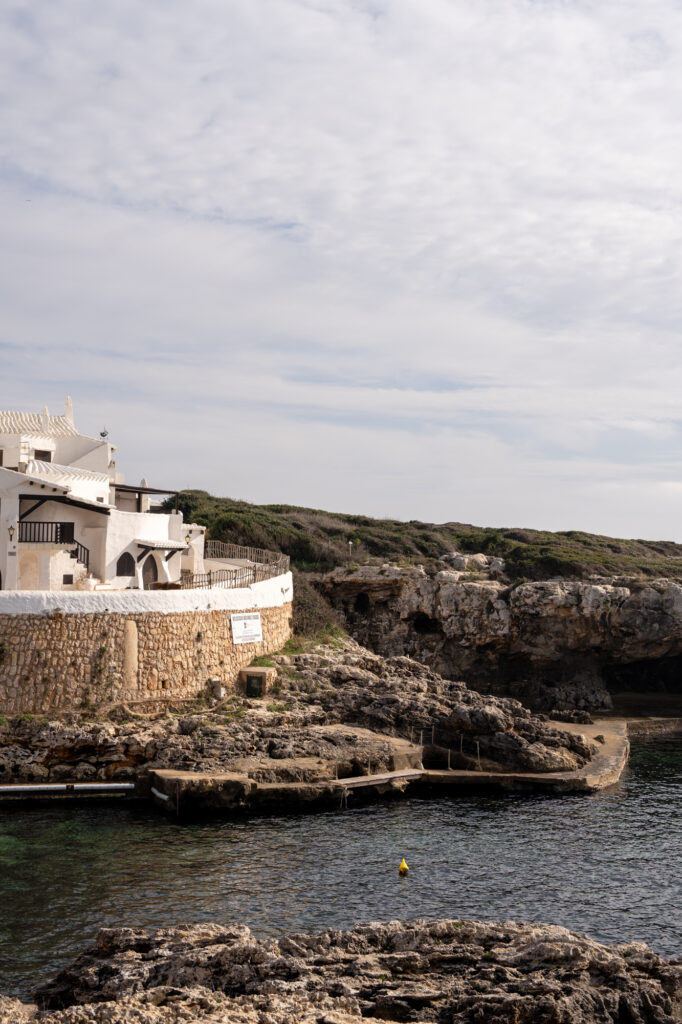
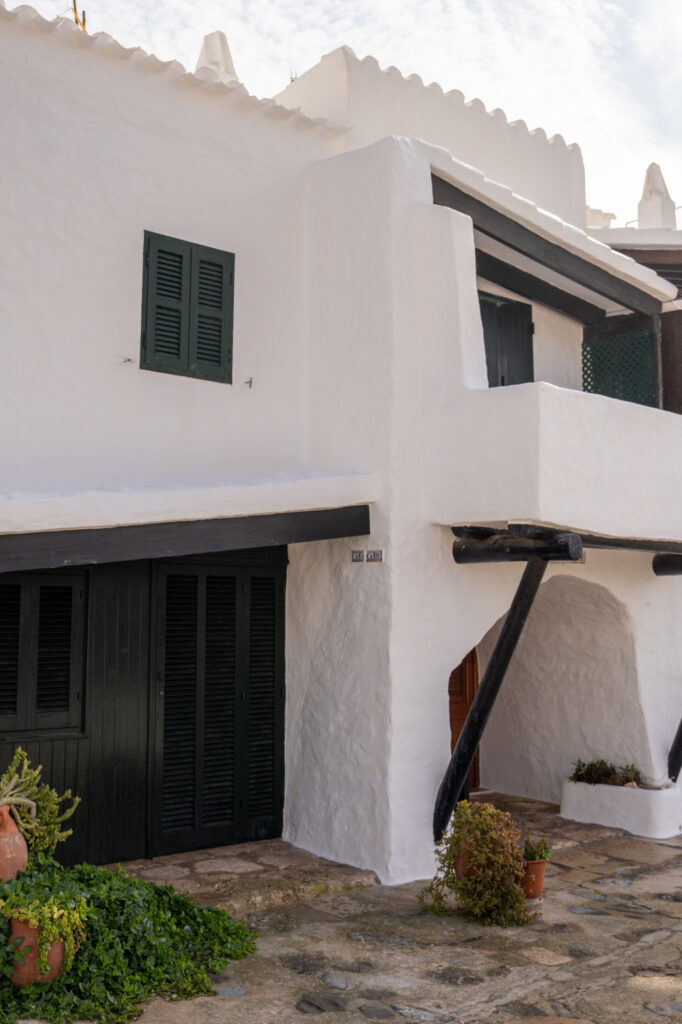
The village was actually the brainchild of Antonio Sintes, a Spanish architect, and it was conceived just five decades ago in the 1970s. It was his dream to design and build a space for artists and intellectuals – a place that would inspire imagination and creativity, a peaceful place where like-minded people could gather.
The first house, Casa Candi, still exists and as you wander through the narrow streets you’ll perhaps recognise some of the scenery – for local painter Francesc Poch Romeu encapsulated the village in many of his artworks.
The village stretches for three kilometres along the coastline, divided into three parts – Binibeca Vell – the old village in the west, Binibeca Nou – with shops, villas and restaurants in the centre and Cala Torret; a small fishing village on the outer fringes to the east.
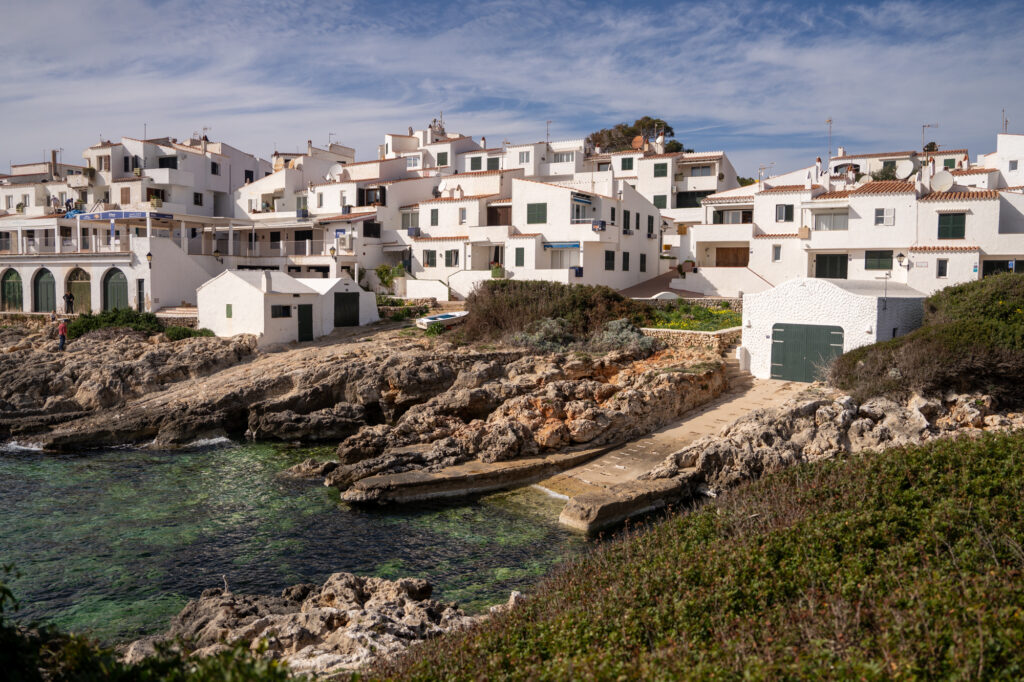
Getting to Binibeca
Binibeca is easy to visit from the Menorcan capital Mahón. It takes around 20 minutes by car to drive along the Me-8 route and join the Me-10 at Sant Lluis.
If you’re driving to Binibeca directly from the airport, the Me-12 leading away from the terminal buildings joins the same route as above. It’s also possible to book a shared shuttle transfer from the airport to Binibeca (seasonal) or a taxi costs around €20-25 if you don’t fancy navigating the roads.
To reach Binibeca from Ciutadella, drive along the Me-1 towards Mahón, then join the Me-8 and Me-10 as above. The entire journey takes under an hour.
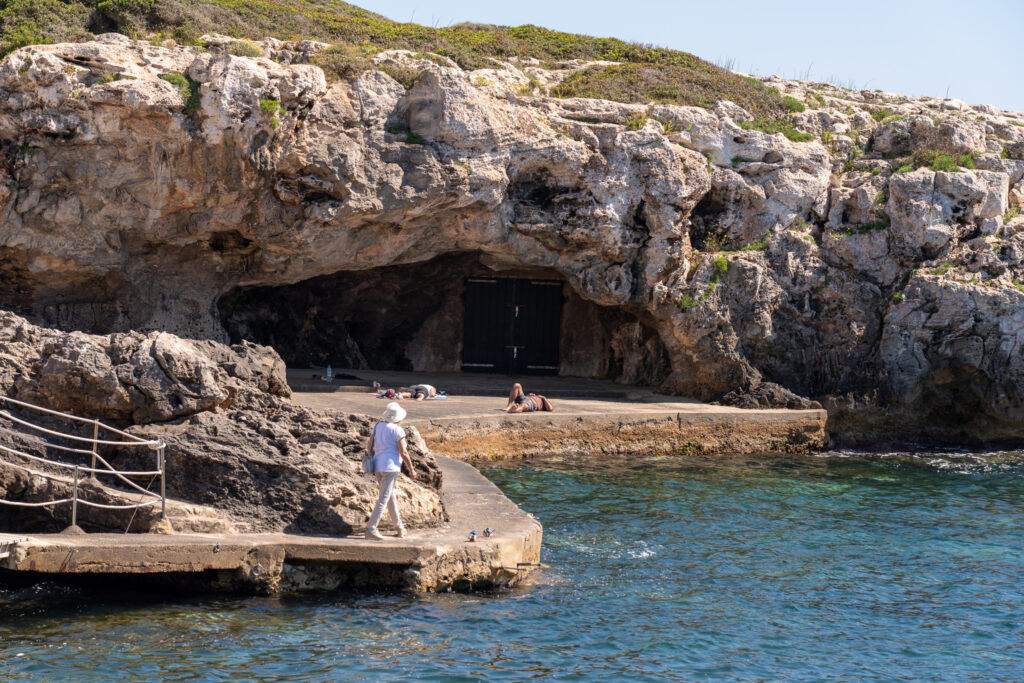
If you’re staying in Mahón (Maó) you can also travel to Binibeca by public transport. Take the no.93 bus from Estacio d’autobusos de Maó. The bus changes at Sant Lluis to reach Binibeca.
Some services may be seasonal operating from May to mid-October, so it’s always good to check before starting on your journey. A single trip ticket costs from €1,75 per person.
There are also some great tours available such as this one including a Mahón guided tour and a Binibeca visit. It can pick you up from several locations on the island.
Things to do in Binibeca
If you’re wondering what to do in Binibeca, there are quite a lot of activities to enjoy in and around the village for those who seek more than lazy days on the beach. Below are a few of my favourite things to see and do during your stay.
Binibeca Old Town (Binibeca/Binibèquer Vell)
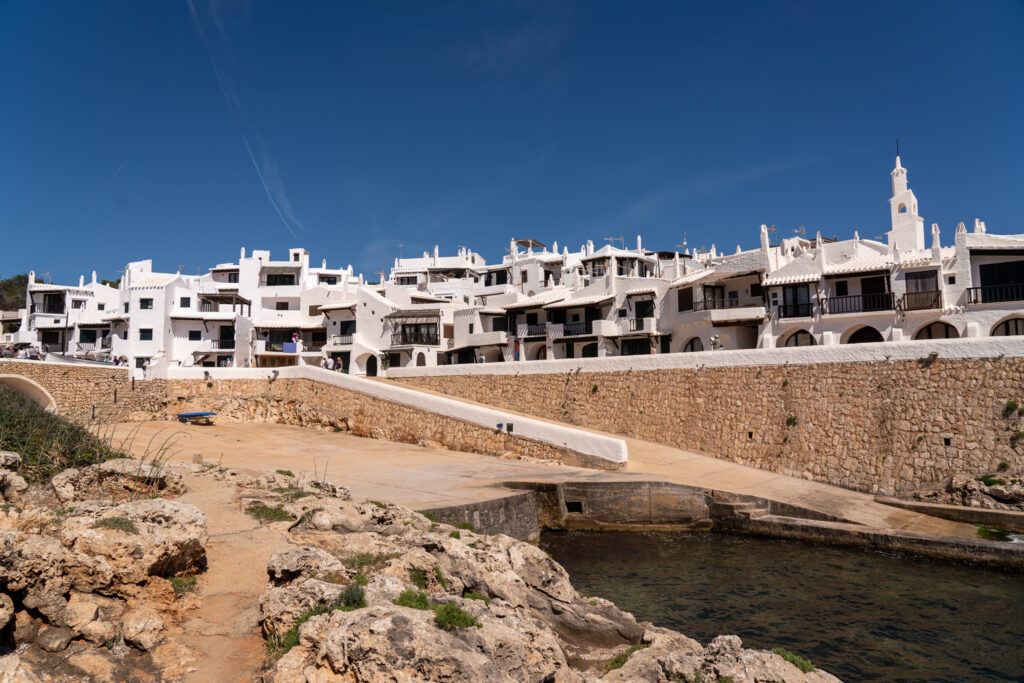
The old section of the fishing village, Binibeca Vell, has just 165 houses, all woven together by narrow stone-paved alleyways. As you meander through the maze of streets, notice plant pots filled with geraniums brightening outdoor patios, see tiled murals on the walls and inhale the scent of exotic flowers draping from archways.
You can spend time browsing quaint souvenir shops for gifts or compare ‘Menu del Dia’ offerings on restaurant boards before breaking for a delicious alfresco lunch.
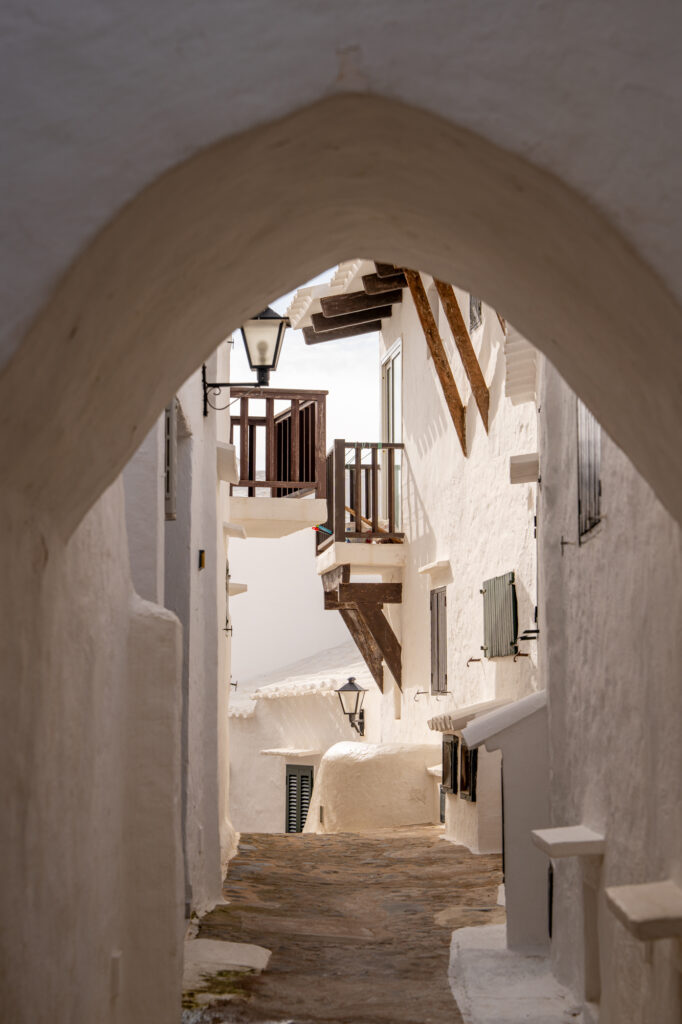
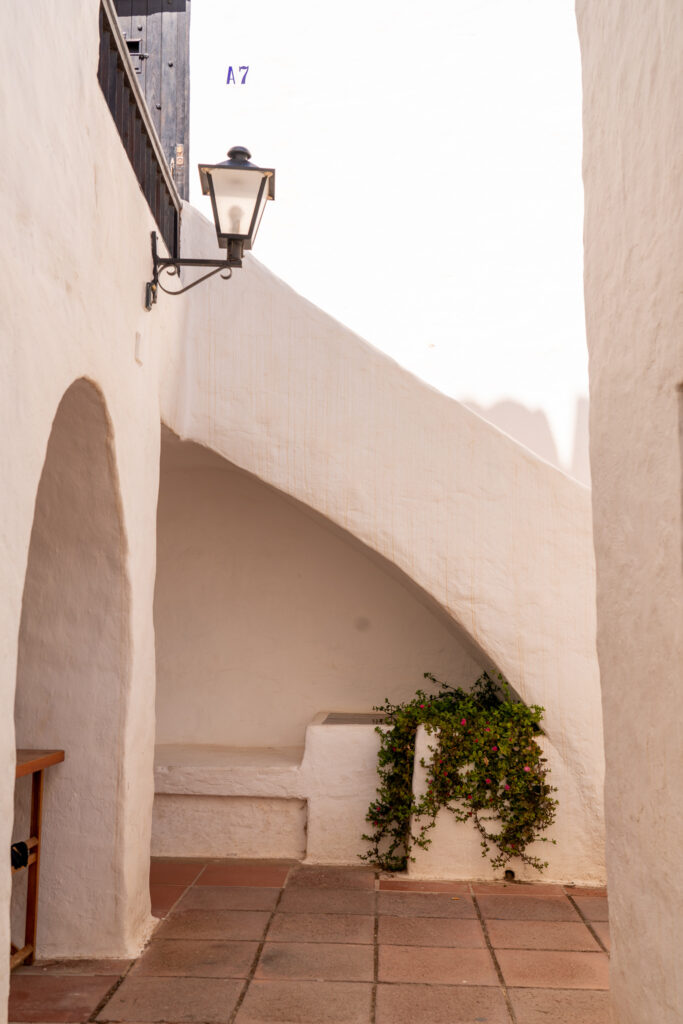
Afterwards, head down to the port to soak up the sun on one of the bathing platforms. Watch the small boats bobbing up and down in the cove or take a stroll through Pequeña Villa (Little Village) with lovely views of the bay.
Some highlights to include in your village tour are the main square, Binibeca Church, one of the first structures to be built, and Casa Candi, the oldest house.
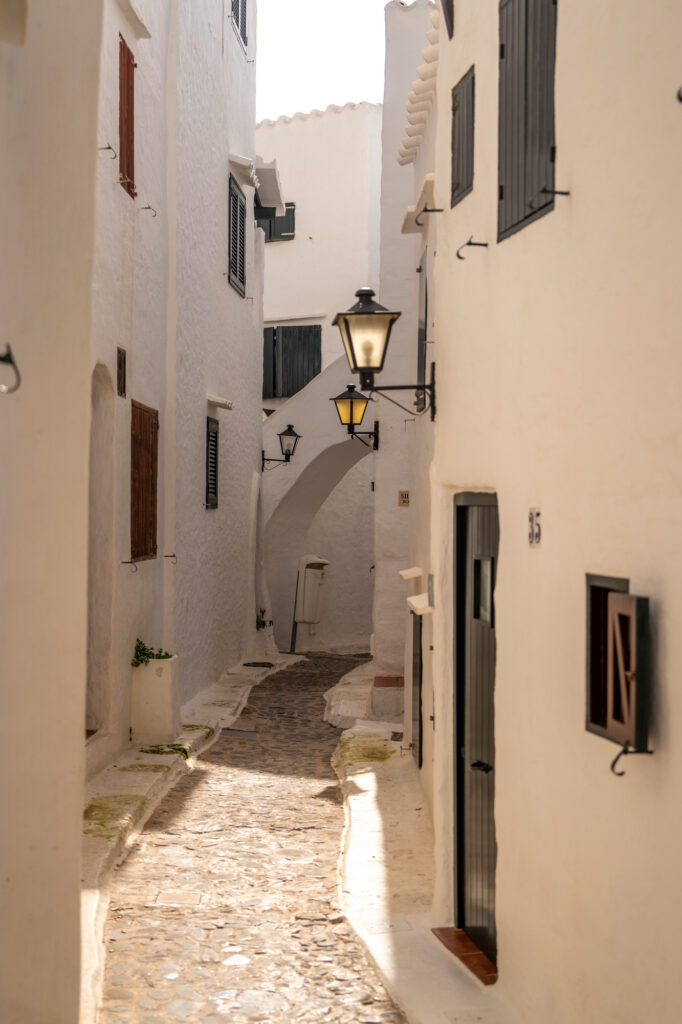
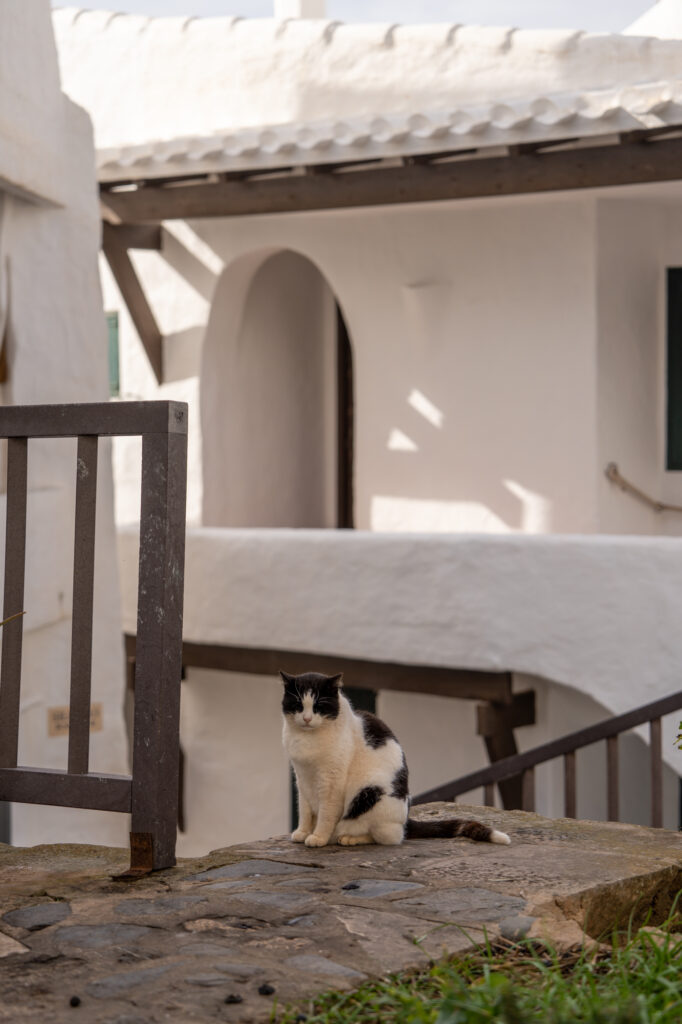
Binibeca Vell is best explored in the morning, particularly in peak season, as it tends to get busy as the day progresses and the tour buses arrive!
Binibeca Beaches
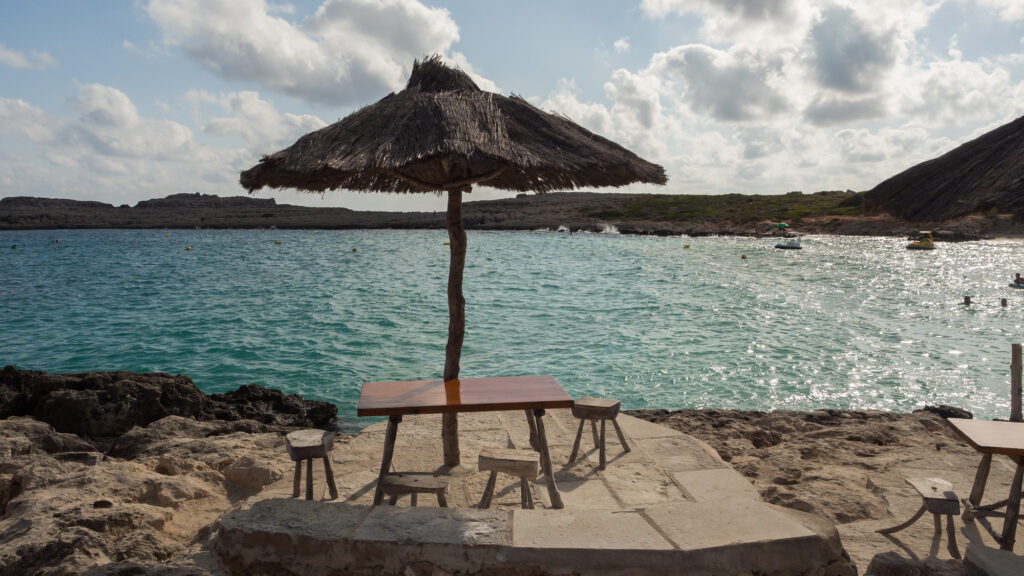
Binibeca has several stunning beaches within a short walk of the village centre. Spend time in the part of the village known as Binibeca Nou to be closest to the most popular Binibeca beach. This Blue Flag beauty encompasses a curved, deep cove of sand backed by a lush pine forest.
The shallow, crystal-clear waters are perfect for swimming and snorkelling. There is a casual, seasonal beach bar serving traditional Menorcan fare, and if you wish to stay a while, sun loungers, parasols and pedal boats are available to hire in the peak summertime (but they don’t overwhelm the atmosphere).
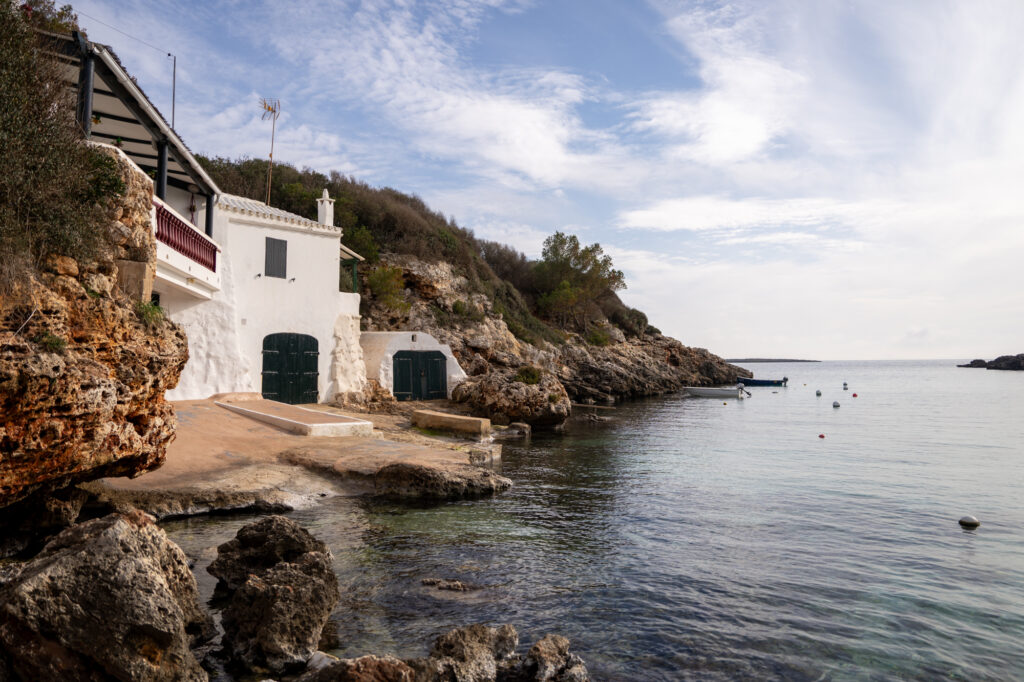
If you fancy a short walk along the Cami de Cavalls, Cala Binisafuller is an idyllic section of sandy beach nestled in a cove flanked by cliffs and boat houses. The waters are shallow for swimming and two good restaurants reside nearby, El Txoko serves fish dishes and desserts and Club Nautico Binisafua offers delicious tapas with a side of sea breeze.
Alternatively, Calo Blanc is one of the smallest (and prettiest) beaches on Menorca. The slither of sand sweeps down to the sea, and if you time your visit well, you may glimpse cliff jumpers plummeting into turquoise waters from the rocks.
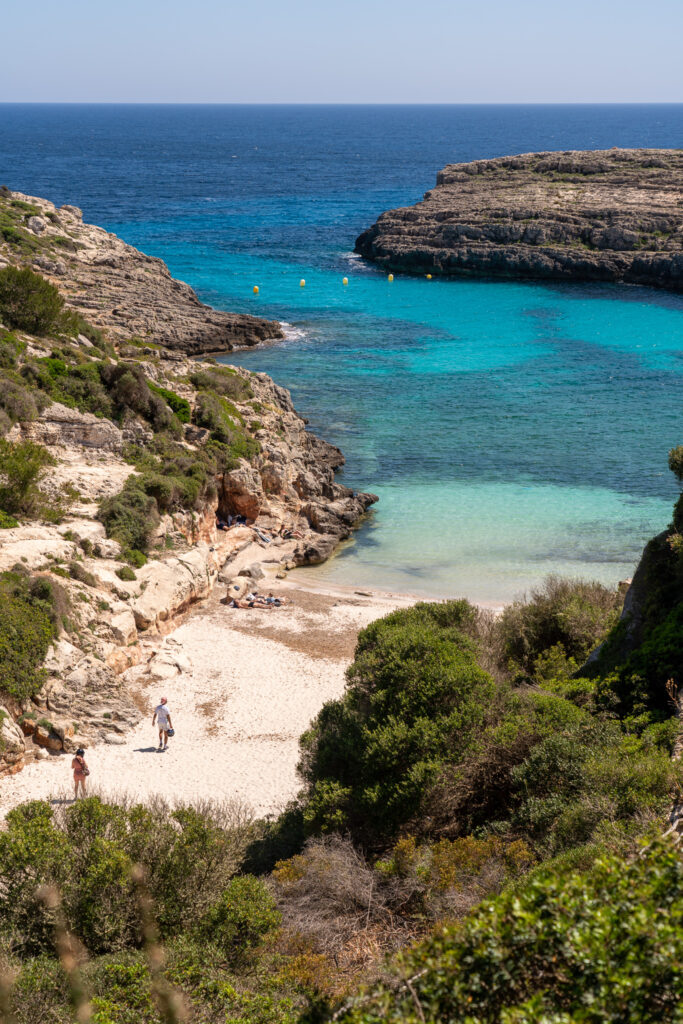
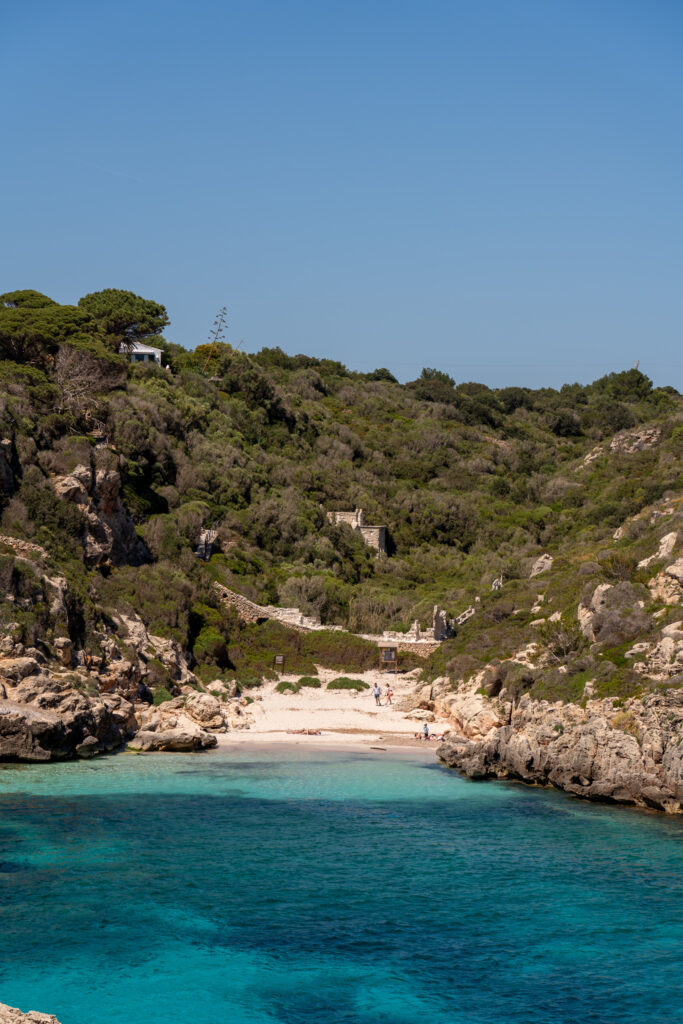
Other beaches deserving an honourable mention in the Binibeca area include Cala Biniparratx, a verdant south-facing cove with a wild setting and superb swimming conditions, and Binidali, a lesser-known cove that barely sees any tourists. If it’s peace and tranquillity you seek, it’s a fabulous place to spend a day.
Read More: Best Beaches in Menorca
Hiking near Binibeca
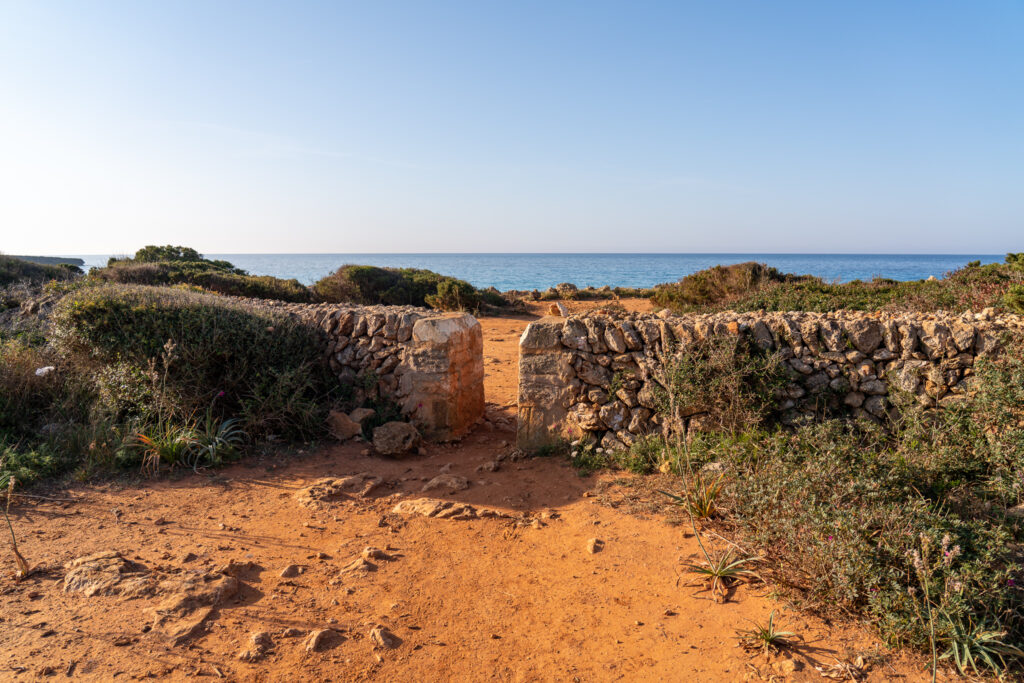
Cami de Cavalls is Menorca’s premier walking and cycling route – a trail that circumnavigates the island stretching for 185 kilometres in total. The route, said to have existed since the 14th century, connects towns and villages, with landmarks acting as strategic outposts to protect Menorca from invaders.
If you’re staying in Binibeca, you’ll have the option to walk east or west along diverging sections of the trail. The route heading east along the Cavalls track transports you from Binibeca to Punta Prima towards S’Algar. Although much of this stage takes you past the marina and through residential areas, there are still sites to see including Torre de Son Ganxo and Illa de l’Aire (Air Island) off the coast – an area known for its lighthouse and vast population of Balearic lizards.
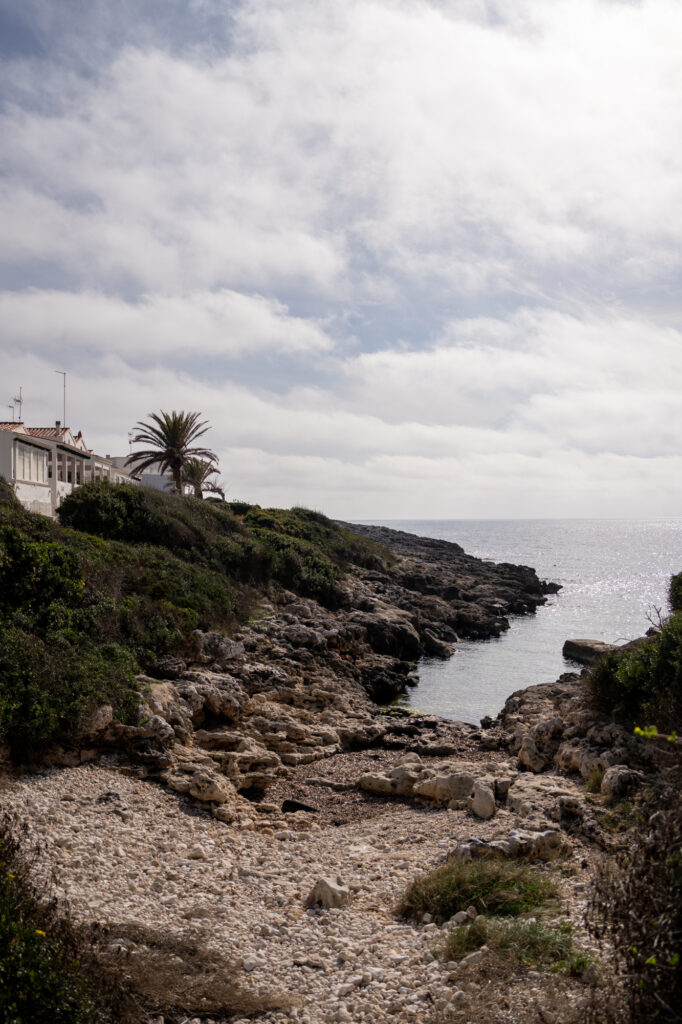
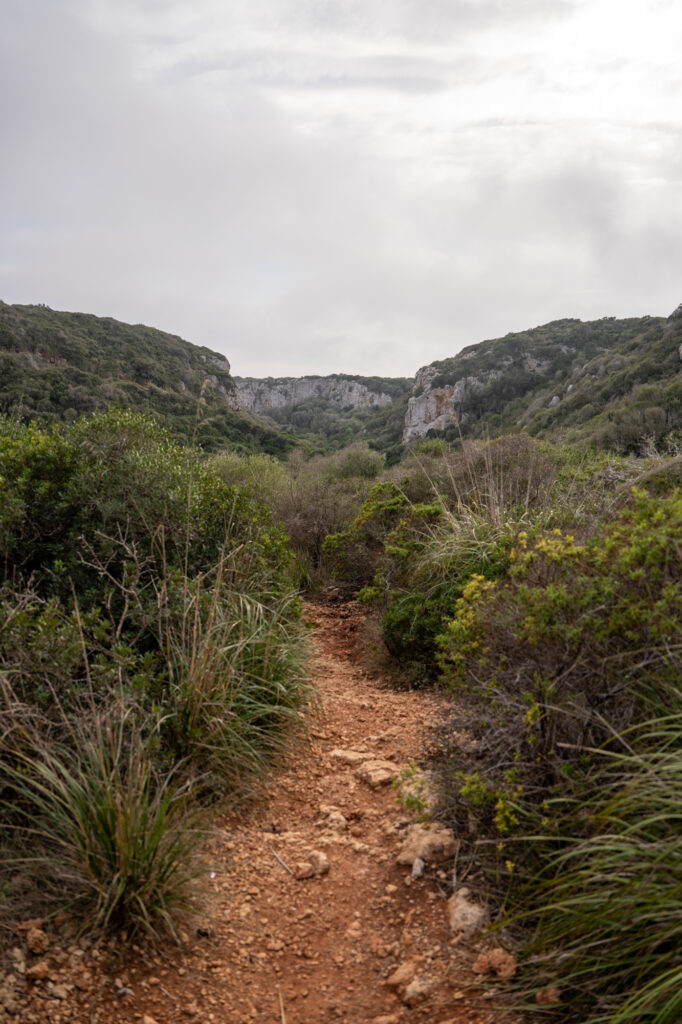
If you prefer to hike west in the direction of Binissafuller, the route takes you through Binibeca Vell, and around the cove, which boasts excellent views. You can marvel at the wonders of nature in the pine forests, stop for a picnic, or enjoy a spot of snorkelling at Calo Fondo, an area enriched with marine life.
If you’re up for a longer trek, you can follow the camí all the way to Cala en Porter, taking small detours to visit hidden beaches as you go.
Other Things to do in and Around Binibeca
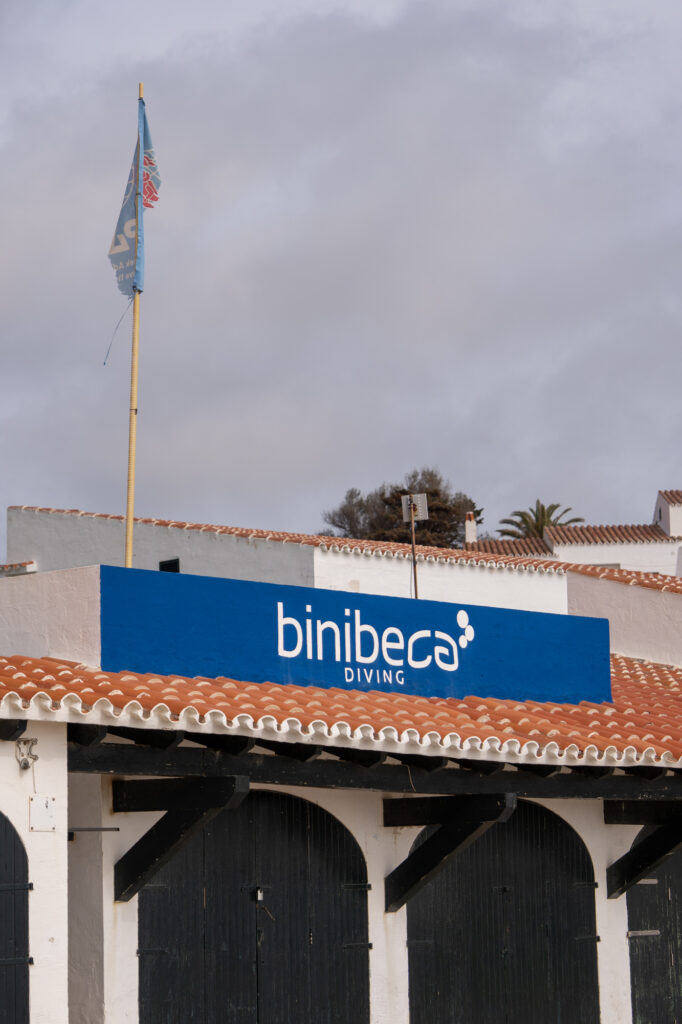
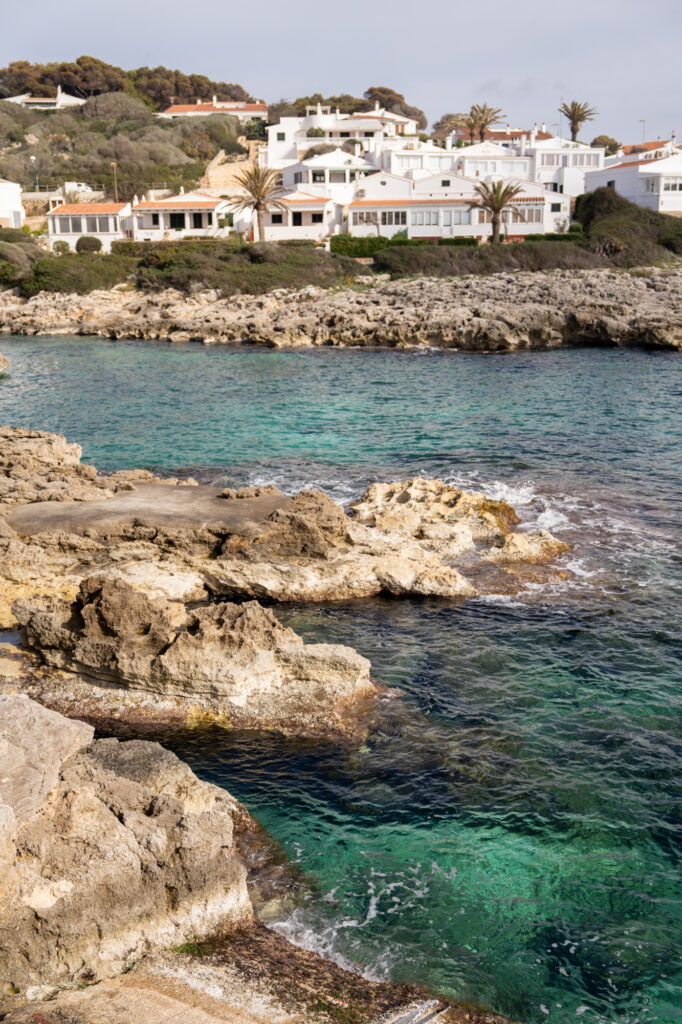
If you enjoy partaking in watersports, Binibeca is a great place for snorkelling and diving. The visibility is superb and there are interesting underwater sites to explore with sunken ships, airplanes, caves and myriad marine life. The local PADI dive centre is a short walk from the village beach.
If your holiday isn’t complete without visiting a local market, then head for Sant Lluis, a 10-minute drive away. Founded during the short French occupation of the island, the unique village is home to the whitewashed Dalt Windmill, a small museum, a pretty church and a handful of shops and eateries.
The town hosts a twice-weekly market selling local produce, and in the summer months, art exhibitions, music and social events take place. While visiting Sant Lluis, don’t forget to visit Binifadet Winery. It’s open from May to October each year.
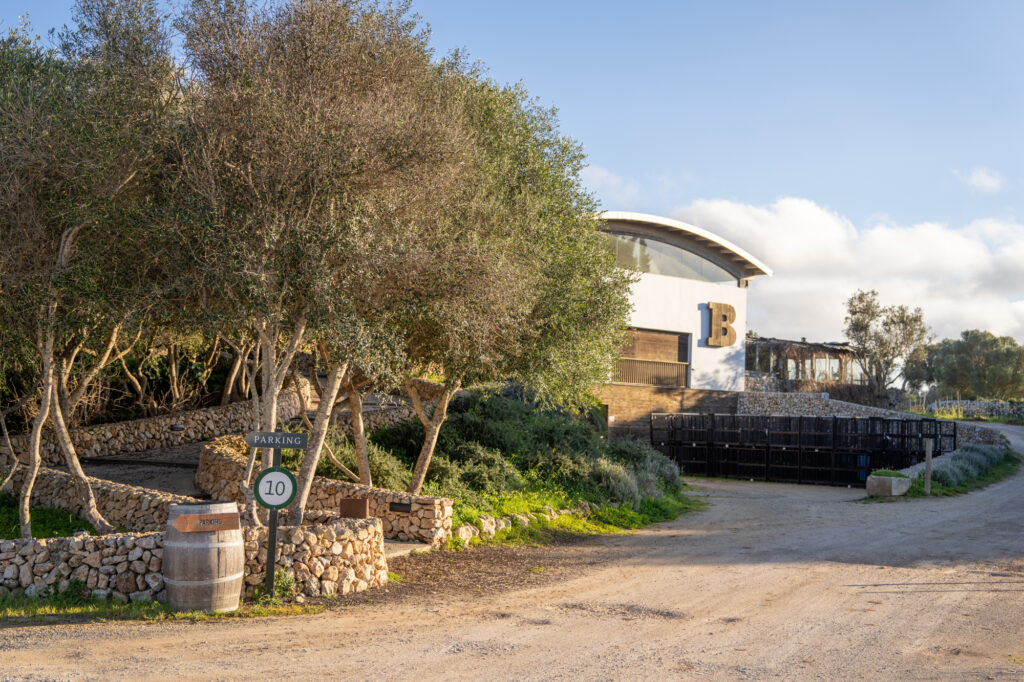
Nearby, in Punta Prima, the coastal defence Torre de Son Ganxo beckons. Built in 1786 by the Spanish following a period of English rule, the landmark tower offers incredible vistas of Illa de l’Aire, so don’t forget your camera!
It’s also easy to access Menorca’s capital Mahón by bus, car or boat trip. Here, you can explore the tapas bars of the old fish market, browse markets in Carmelite Cloisters or visit the historic house of C’an Oliver with its incredible artworks. Or, if ancient history is more your thing, the Museum of Menorca inside an old monastery has interesting exhibits relating to the Talayotic culture in Menorca.
Read More: Best Things to do in Mahon, Menorca
Where to Eat in Binibeca
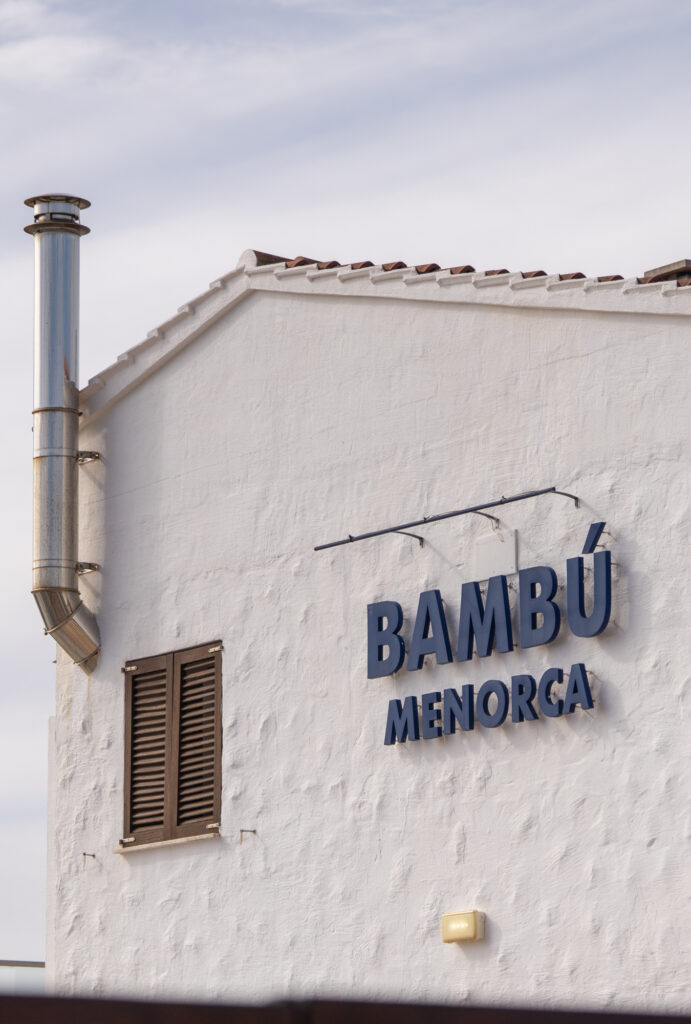
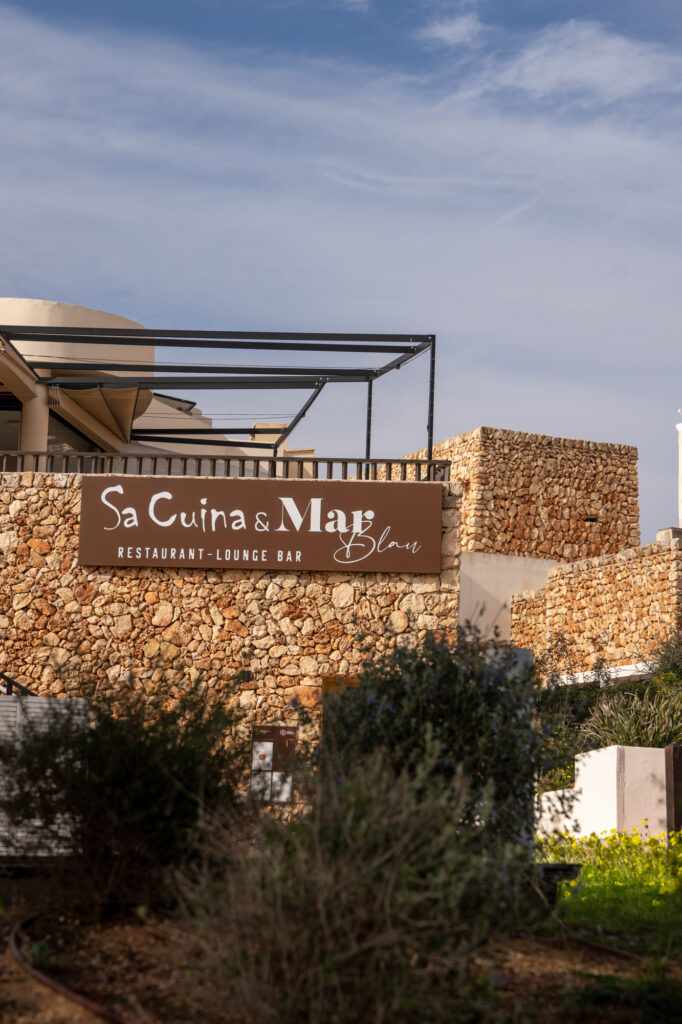
One of the hippest restaurants in Binibeca both for décor, location and ambience is Bambu. The terrace offers glorious sunset and sea views, and the food receives rave reviews. Dine inside or alfresco on seafood, vegan or vegetarian dishes infused with Asian flavours, then relax with a craft cocktail in the Zen Garden.
The chefs at Bambu use fresh ingredients, delivered daily from Menorcan purveyors or picked from their own herb garden, plus they promote zero waste initiatives, making them an eco-friendly choice for lunch or dinner.
If it’s Spanish seafood dishes you crave, El Faro Restaurant in Cala Torret is a popular local seasonal haunt, partly due to its privileged seaside position. They specialise in paellas and an array of seafood dishes, but even if you’re vegetarian or vegan, you’ll find a few options to suit.
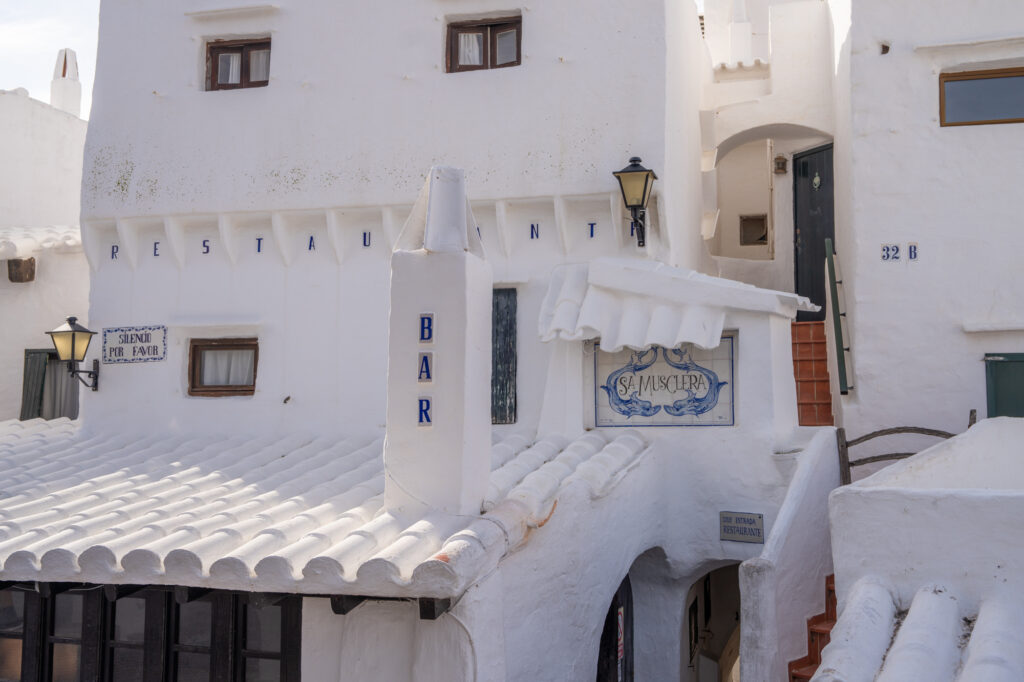
Paseo 60 in Binibeca is a casual cafe for an easy lunch or dinner. I love their poke bowls and healthy smoothies, but you’ll also find burgers, fish and meat dishes if you’re after something heartier. The casual vibe and family-friendly menu caters to most tastes and budgets. If you’re heading out on a hike or picnic, you can also take food away.
Binibeca Key Things to Know
Binibeca is a seasonal town, and most facilities close down for the winter months. When I visited most recently in February, I was the only one wandering the lonely streets.
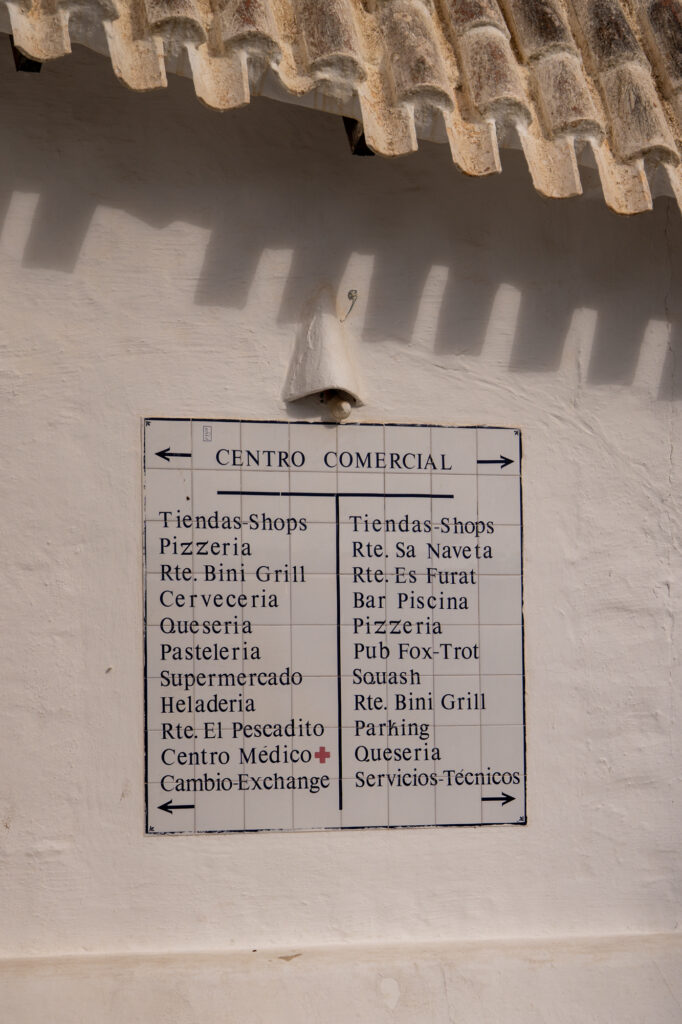
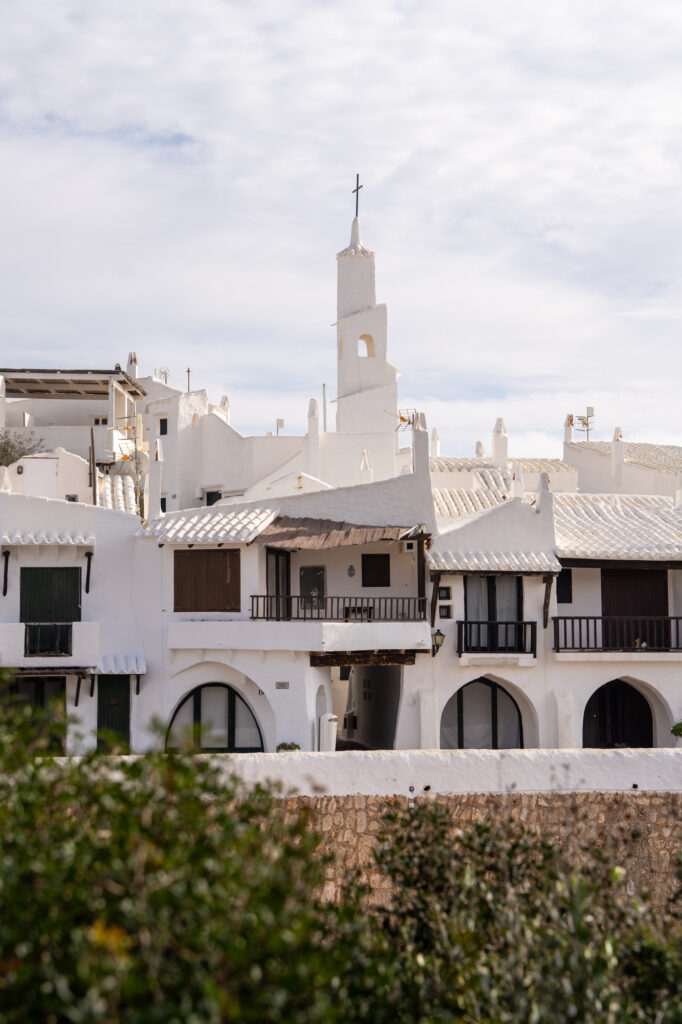
In season, there is a small supermarket, some gift stores, the restaurants mentioned above, plus a few more, a car rental place, and an ATM.
Where to Stay in Binibeca
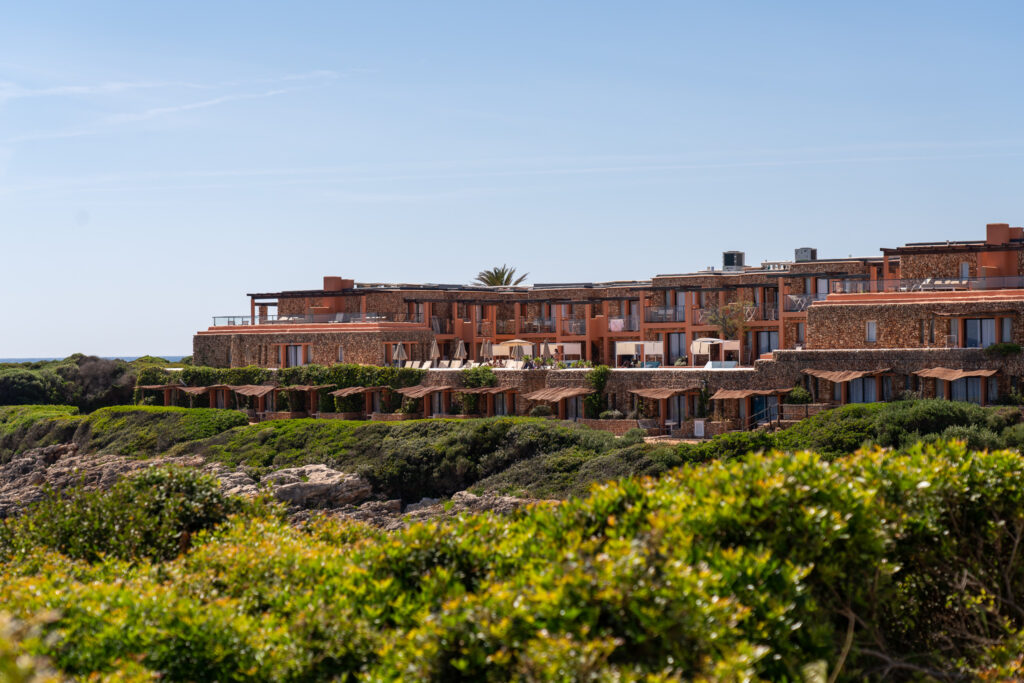
Accommodation in Binibeca is largely provided in the form of holiday villas and apartments, although there is one notable hotel in a prime position. Menorca Binibeca by Pierre & Vacances is an adult’s only hotel situated opposite the old town.
If you’re looking for self-catering accommodation, or want something more family-friendly, check out the below options instead:
Es Chalet is a lovely 3 bedroom home within walking distance of Binibeca Vell and Binisaafuller. You’ll be charmed by the whitewashed walls, pink bouganvillea, and teal blue shutters – and that’s before you set foot in the beautifully renovated home.
Villas Etnia are a group of three-bedroom villas, each with their own private pool. Ideal for families vacationing together, or larger groups. You’ll also benefit from private parking, and sea views.
Looking for something a little more traditional? This seafront house in Binibeca Vell will have you in the heart of the action, sipping coffee on your private terrace as you watch the day trippers arrive. This traditional accommodation even comes with its own rooftop terrace for sunbathing.
Even though Binibeca is primarily a tourist resort open from April until mid-October, you can visit throughout the year. I find the beaches, walking trails and old town at its best in the off-season. But whatever time of year you plan to travel, Binibeca is as idyllic as all the postcards portray. Don’t miss a trip to this idyllic village when visiting Menorca.

